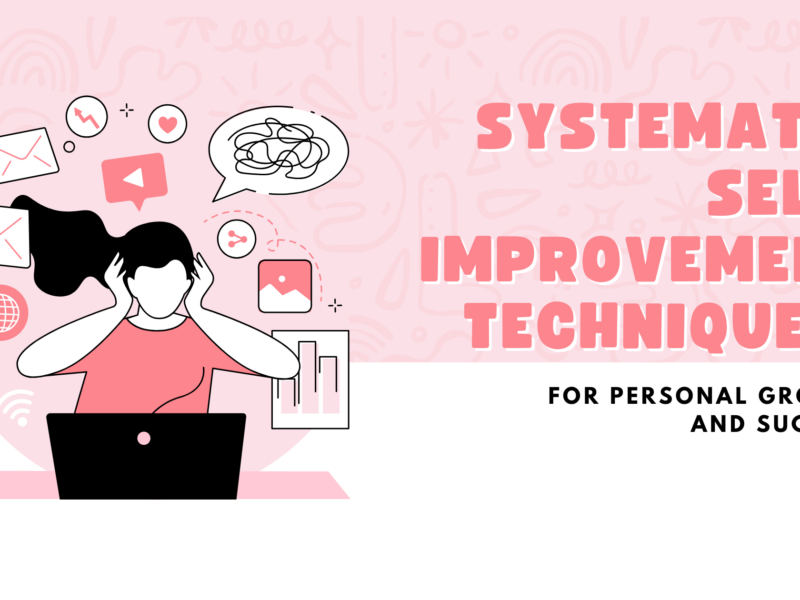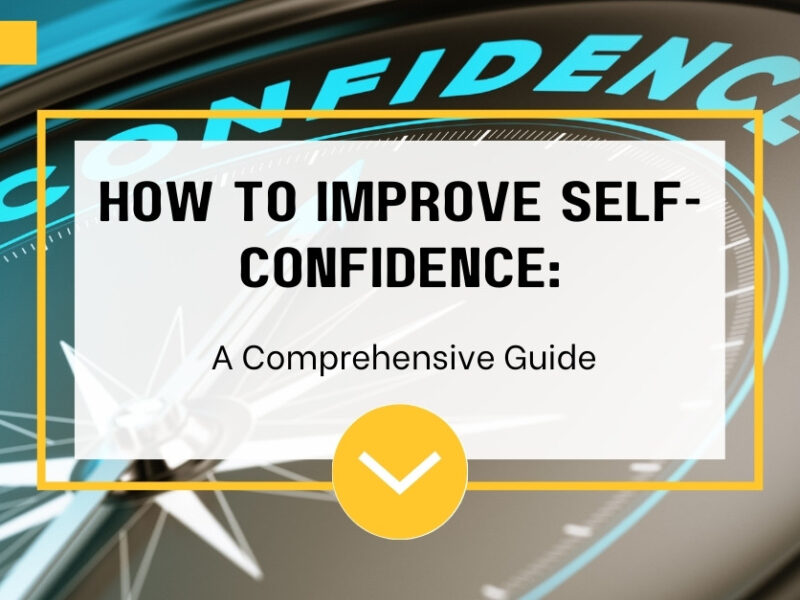Self-esteem is the very basis of our well-being. It forms the way we think about ourselves and how we relate to the world. It determines the level of our confidence, our relationships, and our success. People who have high self-esteem are generally optimistic, resilient, and better at dealing with life’s setbacks. They have the capability of taking risks, capturing opportunities, and remaining optimistic about life.
On the other hand, low self-esteem may bring disastrous results on mental health, which usually ends up with anxiety, depression, and indecisiveness. Individuals with low self-worth doubt themselves, fear failure, and cannot accept compliments. This can interfere with personal and professional growth by affecting a person’s ability to form meaningful relationships and advance in their pursuits.
Self-esteem is important in living a life to the fullest. It means knowing and being able to stop negative self-perceptions, being compassionate to oneself, and holding a growth mindset. Individuals can build confidence slowly by taking small steps: setting realistic goals, surrounding themselves with positive people, and doing positive things. Here are some ways to develop healthy self-esteem that will lead to lasting self-confidence.
Self-Esteem Understanding
Self-esteem is basically the perception of our value and view of ourselves, influencing our confidence, decisions, and well-being. It develops over time and gets molded through the various experiences of life, relationships, and achievements. Some of the following key factors work in building selfesteem positively or negatively.
• Childhood Upbringing: Early life experiences play a very important role in building up self-esteem. Supportive and encouraging parents or caretakers instill confidence within the child. On the other hand, criticism, neglect, or unrealistic expectations can make one doubt himself and feel low on confidence in adulthood.
• Successes and Failures: Success reinforces self-esteem by perceived competence and capability. Conversely, repeated failures, setbacks, or lack of recognition for effort will promote feelings of inadequacy and self-doubt. Learning to view failures as opportunities for growth rather than personal shortcomings is critical to maintaining healthy self-esteem.
• Social Comparisons: Comparing oneself to others in today’s digital world, most especially on social media, affects self-esteem quite a bit. Constant exposure to idealized images and achievements may lead to feelings of inadequacy. The focus should be on personal growth rather than comparisons to help one maintain a good self-image.
• Mental Health Disorders: Anxiety and depression can greatly lower one’s esteem. The habitual pessimistic mind, negative attitude toward oneself, and feelings of uselessness create barriers to realizing personal strengths. This is improved by seeking support from professionals along with the practice of self-care that helps in the development of positive self-perception and building confidence.
Being able to understand these influences provides insights for taking steps toward better self-esteem and thus a healthier self-image.
Indicators of Poor Self-Esteem
Low self-esteem can only be identified after one is able to recognize its signs. Self-esteem makes individuals think, feel, and act in certain ways, influencing their confidence and interaction with others. Here are some common indicators of low self-esteem:
- Self-Criticism: Many people with low self-esteem keep criticizing themselves, doubting their capabilities, and questioning their worth. They might focus on flaws, mistakes, or shortcomings instead of strengths and achievements.
- Fear of Failure: Individuals may have a strong fear of mistake-making or failing, and that may prohibit them from trying something different or pursuing their goals. Because of this, they may avoid challenges where their potential to succeed is not well understood.
- Difficulty Accepting Compliments: Individuals with low esteem may struggle to accept praise or positive feedback, believing they do not deserve recognition. They might dismiss compliments or assume others are being insincere, reinforcing their negative self-perception.
- Avoidance of Challenges: Lack of confidence may make a person avoid any situation that calls for effort or taking risks. This could lead to a vicious circle where the individual misses opportunities for growth and success, further lowering self-esteem.
- Inadequate/Not Worthy: Dominant feelings of never being “good enough” spill over into every aspect of life, affecting relations, career pursuit, and happiness. Individuals will often measure against others and may feel inadequate; frustration and self-doubt result.
From these signs, therefore, one can make a conscious effort in developing positive esteem through challenging negative thought processes and the building of positive, confident self-images.
SEE NOW: Best Self-Help Books for Women: A Comprehensive Guide to Empowerment and Growth
Why Improving Self-Esteem Matters
Boosting esteem leads to numerous benefits, including:
• Increased motivation and productivity
• Better relationships
• Reduced anxiety and stress
• Greater resilience
Practical Strategies to Improve Self-Esteem
1. Challenge Negative Self-Talk
Our inner dialogue significantly impacts self-esteem. Replace self-defeating thoughts with positive affirmations. For example:
• Instead of “I’m not good enough,” say, “I am capable and learning every day.”
• Practice daily affirmations such as, “I am worthy of love and respect.”
2. Set Realistic Goals
Breaking down big goals into small, achievable steps boosts confidence. Use the SMART criteria :
• Specific : Clearly define your goal.
• Measurable: Track progress.
• Achievable: Set realistic expectations.
• Relevant: Align with personal values.
• Time-bound: Set deadlines.
3. Practice Self-Care
Taking care of yourself physically, mentally, and emotionally improves selfesteem. Basic self-care includes:
• Eating a healthy diet
• Engaging in exercise
• Sleeping well
• Engaging in hobbies
4. Surround Yourself with Positive People
The company you keep is the company that will affect your selfesteem. Avoid toxic relationships and spend time with supportive, uplifting individuals.
5. Practice Self-Compassion
Be easy on yourself, and remember that everyone makes mistakes. Instead of self-criticism, you can use self-compassion by:
• Treating yourself with the same kindness you offer a friend
• Viewing imperfection as part of the human experience
6. Cultivate a Growth Mindset
View challenges as opportunities for growth. Instead of fearing failure, see it as a learning experience. Steps to cultivate a growth mindset include:
• Reframing failures as lessons
• Persisting despite setbacks
• Seeking feedback and applying it
7. Celebrate Achievements
Acknowledge and celebrate your progress, however small. Keep a journal of accomplishments to remind yourself of your growth.
8. Engage in Positive Activities
Participate in activities that bring joy and fulfillment such as:
• Volunteering
• Pursuing a hobby
• Learning a new skill
Per-overcoming Common Self-esteem Barriers
Dealing with Social Comparison
Social media usually creates an unhealthy comparison. How to overcome:
• Use less time on social platforms
• Dwell on your unique strengths and achievements
Handling Criticism
Not all criticism is bad. Learn to differentiate between constructive criticism and negativity. Reaction towards criticism by:
• Judging on its validity
• Using it for personal growth
• Ignoring baseless negativity
Long-run Maintenance of Self-esteem
Self-esteem improvement is a gradual process. The progress should be maintained by:
• Practising gratitude
• Setting new challenges continuously
• Lifelong learning
Conclusion
Improving self-esteem takes time and effort, but it is well worth it. You can develop long-term confidence and live a better life by challenging negative thoughts, taking care of yourself, setting goals, and surrounding yourself with positivity. Apply these methods in your life starting today, and love yourself for who you truly are.
READ ALSO: Systematic Self-Improvement Techniques for Personal Growth and Success
Frequently Asked Questions (FAQs) :
1. What are the major causes of low selfesteem?
Low self esteem may be caused by one or more of the following factors: experiences in childhood, negative self-talk, past failures, social comparisons, and mental health diagnoses such as anxiety or depression. Lack of support or encouragement from the family, friends, or society may also lead to poor self-worth.
2. How can I get started on building my self-esteem?
Firstly, challenge the negative thoughts; be kind to yourself. Set small, achievable goals and celebrate your progress. Surround yourself with supportive people, focus on your strengths, and engage in activities boosting your confidence. Daily affirmations and self-care routines can help, too.
3. How does social media affect self-esteem?
Social media can contribute to low selfesteem by facilitating unrealistic standards of beauty, success, and lifestyle. Constant comparisons with others may lead to feelings of inferiority. A healthy self-image is maintained by curtailing social media use, managing a positive online space, and focusing on real-life achievements.
4. Can therapy help with low self-esteem?
Yes, therapy works wonders in rebuilding low self esteem. Cognitive-behavioral therapy will make one more critically aware of such negative thinking and help them think kindly about themselves and thus grow in confidence. Speaking to a therapist will thus provide personal tips for building good selfesteem.
5. For how long should self-esteem be developed?
Building esteem is a process that takes time and is different for everyone. With constant practice of self-care, positive affirmations, and confidence-building exercises, one will notice great changes over time. Patience, persistence, and a willingness to change negative thought patterns are the keys to long-term success.




